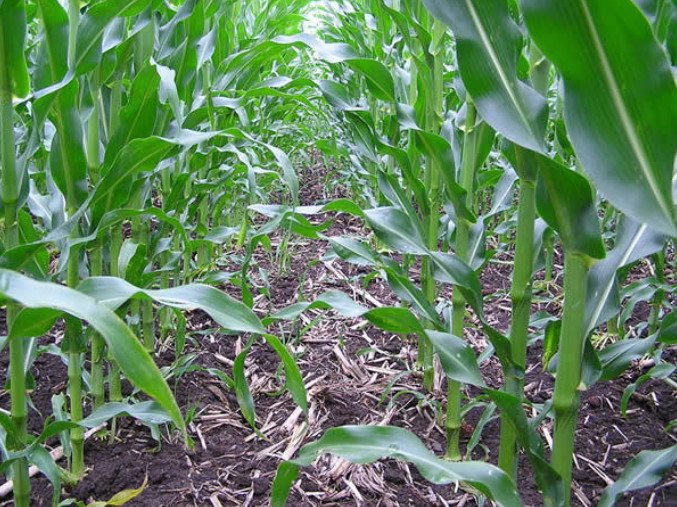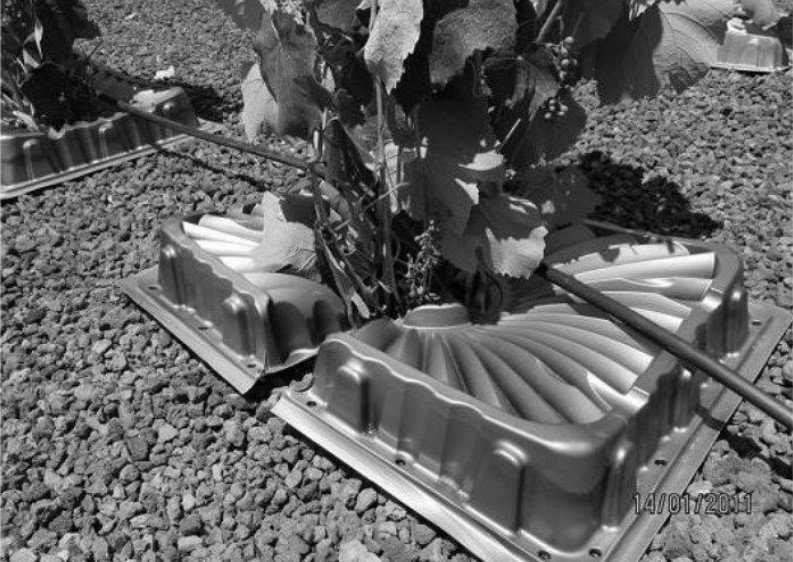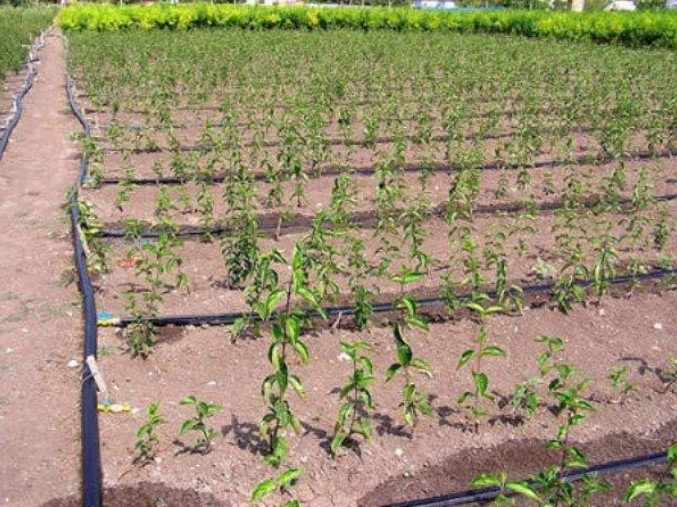This time we will talk about how to organize proper watering and competently save water.
In my mesh greenhouse, in partial shade and under mulch, even in the heat of the heat, drip irrigation must be turned on at most once a week. But around here-just trouble. Every day in greenhouses for two hours the hoses just gush with water without stopping! And it does more harm than good. So I just can’t ignore this topic.
The fact is that soil moisture and irrigation are absolutely not the same thing. Moreover: regular watering is a sign that no one cares about soil moisture. In nature, soil moisture accumulates and multiplies in all possible ways. Nobody stupidly pours water from a hose. If you don’t understand this difference, then in other words watering is a stupid and harmful activity.
I’m giving an introduction. Bare soil exposed to the sun overheats to +60…65 °C(140-149°F) and therefore causes water from plants to evaporate 4-5 times more than necessary. Aridity increases both the drying of the soil and unproductive evaporation by 4-6 times.
All moisture flowing down from the site due to the slope and dispersion of the soil is irretrievably lost by plants. A bucket of water poured onto a square meter of dry soil moistens only 1-3 cm (0.4-1.2 in) of the surface. In the heat, all this water rises into the air in a couple of hours. Mulch with a thickness of 5 cm (2 in) on average doubles the summer soil moisture. In the structural soil, a Rose is planted under the mulch, the volume of water consumption in the summer of which can be reduced by mulching the soil.
The main idea: first do everything not to water, but to keep the humidity in the soil longer. And if you arrange watering, then you need to do it wisely.
Plow sole and green manure
No soil, except loose turf chernozem or sandy loam, will absorb moisture from precipitation if it has not been plowed or dug for a long time. In both cases, a strongly hardened layer is formed at a depth of 20-25 cm (7.9-9.8 in) – pressed soil. This prevents it from absorbing moisture from below. The soil does not breathe, its connection with the subsoil is broken. It does not precipitate underground dew. This means that it removes all excess moisture that precipitates.
How many wetlands have been created under irrigated fields with even a tiny slope! The natural soil is all pierced by roots and worm passages – this allows for intensive gas exchange, dew falls, and then new roots grow. But at the same time, the soil retains mass and density — the main condition for capillarity. Moisture moves freely through the capillaries. In winter and spring – down, in summer – up from the depths.
Theoretically, the plowed soil can be crushed with special disc harrows. But such devices, despite their importance in small farming, are exotic weapons. We use “bio plows” – we cover the fields with crops with powerful rod roots, the length of which is 3-6 m (9.8-19.7 ft) deep.

To the south of is the strongest bioplus – donnik (biennial). It is sown in spring under the cover of the main crop, in autumn it forms a rosette of roots. The next summer is a powerfully growing and blooming plowing plant. Alfalfa is also good, but also for at least two years. Of annual plants, it is stronger than, for example, oilseed radish.
For the North the best plant is clover and lupin (annual). Supervillains also accumulate a lot of organic matter: corn or Sorghum – drummondii, Sorghum and millet. And how much mulch is obtained from them!
Continuous soil shading
Examining the condition of crops with the help of aerial photography and thermal imagers, it turned out that it does not fit in my head: the yield of the field is completely unrelated to the amount of precipitation.
Even on the same soil with the same amount of precipitation, yields vary significantly. What is the reason? It turned out – first of all, in the degree of shading of the soil. With sparse sowing, the soil overheats, the surface air overheats, and plants are forced to evaporate 4-5 times more moisture than necessary. Even if you do, all their energy will be spent fighting the heat.
What comes to mind first? And we have one thing on your mind: to water, to water!

The soil does not overheat if it is completely shaded, without gaps. This means that the leaf seeding index is 4. That is, 4 square meters (43 sq. ft) of leaves per square meter of soil. Bare soil is against plants, which means that it is against you. Therefore, there should be no bare ground in a chic garden. Even better, if the bushes and gazebos protect it from the wind.

And again mulch
Without it – nowhere at all. This shelter is irreplaceable. It was invented by nature. All processes and inhabitants of the soil are genetically adapted to turf felt and forest litter. Without this “blanket”, the soil would have dried up along with the subsoil.
Mulch “moistens” the soil in two ways. In the morning, before dawn, the mulch cools down to the dew point. Moisture condenses in it and at its boundary with the soil. All this goes to supply the roots with moisture. During the day, mulch keeps cool in the deep layers of the soil, and the moisture of the hot air condenses in soil channels — there are millions of them in untouched soil. The hotter the air, the more moisture it contains.
As you can see, if soil moisture is associated with precipitation, it is not always and not directly! Various types of mulch have been studied and are widely used in Europe.
A lot of moisture is deposited on the surface and returns to the soil with a covering material that does not absorb water. But in a cool climate, as you remember, a transparent film is also suitable.
Experiments have established that a film covered with a 4-5 cm (1.6-2 in) soil layer condenses on the underside and returns all the soil moisture. Even in hot climates, tomatoes planted on such beds in punctures through the film give a decent harvest without watering. If you pour water into the grooves dug along the ridges in the evening, in the morning almost all of this moisture will be under the film.

“Cunning farmers” brought this to industrial technology! Invented dew collectors for bushes or seedlings growing on drip irrigation. Penny stamping made of plastic and saving a third of irrigation water! That’s what mental work means instead of physical work.
Sepp Holzer covers all the seedlings with stones, almost without digging, and they survive by feeding on the morning condensate on the stones. I also use a lot of stones – both as mulch for trees and as borders for flower beds. All of them perfectly accumulate morning dew.
But it is important for us to collect moisture in order to preserve and enrich the soil. This is millions of years only organic mulch does – there has never been another on the planet. I have already said enough about this in the chapter on fertility.
Water accumulators
In the forest, a huge amount of water accumulates in dry and rotten tree trunks embedded in the soil. This is how the Austrian naturalist farmer Sepp Holzer suggests collecting and storing moisture. He buries dry trunks and branches under the crests of his hills. Just to clarify: this should be done in the fall.
She should have time to absorb the water. In spring, dry wood, on the contrary, dehydrates the surrounding soil. Therefore, in a dry climate, you should not get carried away with cubic meters of firewood.
Now there is a way out… well, it’s definitely not worse. Chemically inert acrylate polymers that absorb water are super sorbents, they are also hydrogels.
Teravet is salt, only light. It is thrown into the landing pits. Half a cup is enough for a seedling, a handful for a bush tomato. The Teravet granule absorbs 300 parts by weight of water and turns into a gel.
In the photo – a handful of swollen gel, about half a teaspoon of dry teravet. And when moisture is needed, the roots easily take it from the gel.

Seedlings were grown using hydrogel, stringing its granules on the roots. Then, when transplanted, they practically do not linger in growth or do not linger at all.
According to the reviews of Bulgarian gardeners, teravet plantations require half as much watering. Grape seedlings for the teravet grow twice as powerful from the first year. Peaches are also a year or two ahead of the usual planting. Only thanks to the teravet could the trees greening the abandoned and dry stone quarry survive.
By giving off moisture, the hydrogel dries. Encountering moisture, it gathers it again. And so – many cycles. Made once, the hydrogel works for 6-10 years. Then it is gradually decomposed by bacteria.
So now ask yourself: how many of these methods do we use to provide plants with moisture? But let’s start with this. And even if all this does not help… then let’s at least save water by watering the roots, not the soil!






